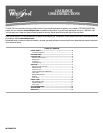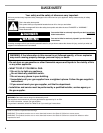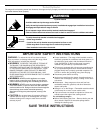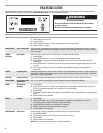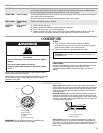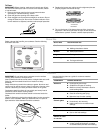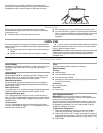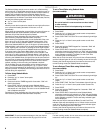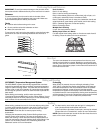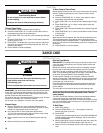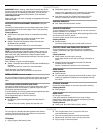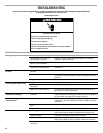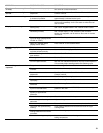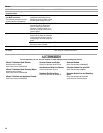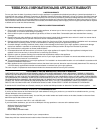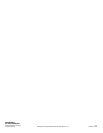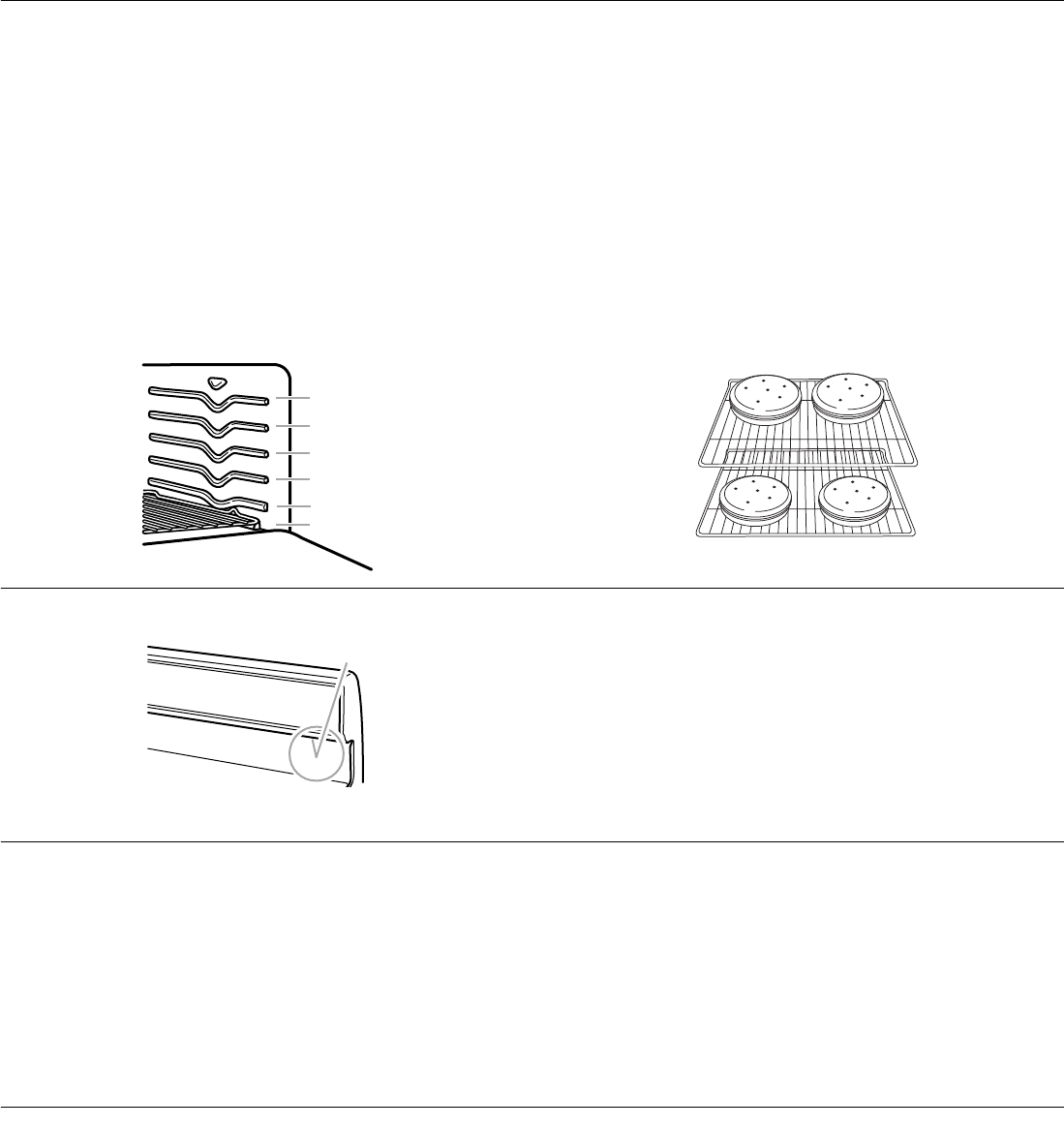
9
Positioning Racks and Bakeware
IMPORTANT: To avoid permanent damage to the porcelain finish,
do not place food or bakeware directly on the oven door or bottom.
Bakeware
To cook food evenly, hot air must be able to circulate. Allow
2" (5 cm) of space around bakeware and oven walls. Make sure
that no bakeware piece is directly over another.
Racks
■ Position racks before turning on the oven.
■ Do not position racks with bakeware on them.
■ Make sure racks are level.
To move a rack, pull it out to the stop position, raise the front edge,
and then lift out. Use the following illustration and charts as a
guide.
Rack Positions
Rack 5: 2-rack baking.
Rack 4: Use for broiling and toasting.
Rack 3: Most baked goods on a cookie sheet, jelly roll pan, or in
muffin pans; casseroles; frozen convenience foods.
Rack 2: Roasting small cuts of meat, pies, casseroles, bundt and
angel food cakes, yeast bread, quick breads, and 2-rack baking.
Rack 1: Roasting large cuts of meat and poultry.
Rack 6: Extra-large items.
Multiple Rack Cooking
2-rack: Use rack positions 2 and 5.
Baking Layer Cakes on 2 Racks
For best results when baking cakes on 2 racks use racks 2 and 5
for baking. Place the cakes on the racks as shown.
Oven Vent
The oven vent releases hot air and moisture from the oven, and
should not be blocked or covered. Blocking or covering the oven
vent will cause poor air circulation, affecting cooking and cleaning
results. Do not set plastics, paper or other items that could melt or
burn near the oven vent.
Baking and Roasting
ACCUBAKE
®
Temperature Management System
The ACCUBAKE
®
system electronically regulates the oven heat
levels during preheat and bake to maintain a precise temperature
range for optimal cooking results. The bake and broil elements or
burners cycle on and off in intervals. On convection range models,
the fan may be cycled on and off for short intervals to provide the
best results.
Before baking and roasting, position racks according to
“Positioning Racks and Bakeware” section. When roasting, it is not
necessary to wait for the oven preheat cycle to end before putting
food in unless it is recommended in the recipe.
Preheating
When START is pressed, the oven will begin preheating. Once
100ºF (35ºC) is reached, the display temperature will increase as
the actual temperature of the oven increases. When the preheat
temperature is reached, a tone will sound, and the selected
temperature will appear on the display. Factors that have an impact
on preheat times are: room temperature, starting oven temperature,
and the number of oven racks. Unused oven racks can be removed
prior to preheating your oven to reduce the preheat times.
Broiling
When broiling, preheat the oven for 5 minutes before putting food
in unless recommended otherwise in the recipe. Position food on
grid in a broiler pan, then place it in the center of the oven rack.
IMPORTANT: Close the door to ensure proper broiling
temperature.
Changing the temperature when Custom Broiling allows more
precise control when cooking. The lower the broil setting, the
slower the cooking. Thicker cuts and unevenly shaped pieces of
meat, fish and poultry may cook better at lower broil settings. Use
racks 4 or 5 for broiling. Refer to the “Positioning Racks and
Bakeware” section for more information.
■ For best results, use a broiler pan and grid. It is designed to
drain juices and help avoid spatter and smoke.
If you would like to purchase a broiler pan, one may be ordered.
Please refer to the “Accessories” section for more information.
NOTE: Odors and smoke are normal the first few times the oven is
used or if the oven is heavily soiled.
6
1
2
3
4
5
A.Oven vent
A



